In 1981 Alan Kay asked me to join him at Atari to continue my work on the idea of an Intelligent Encyclopedia. In order to explain what we were doing to the executives at Warner which owned Atari, I developed these scenarios of how the (future) encyclopedia might be used and commissioned Glenn Keane, a well-known Disney animator to render them. The most interesting thing for me today about these images is that although we foresaw that people would access information wirelessly (notice the little antenna on the device in the “tide pool” image, we completely missed the most important aspect of the network — that it was going to connect people to each other.
Children in the dinosaur exhibit at the Museum of Natural History carry Intelligent Encyclopedia’s with headphones around instead of audiotape players. Interactive simulations of dinosaur life from the IE are running on the wall monitors.
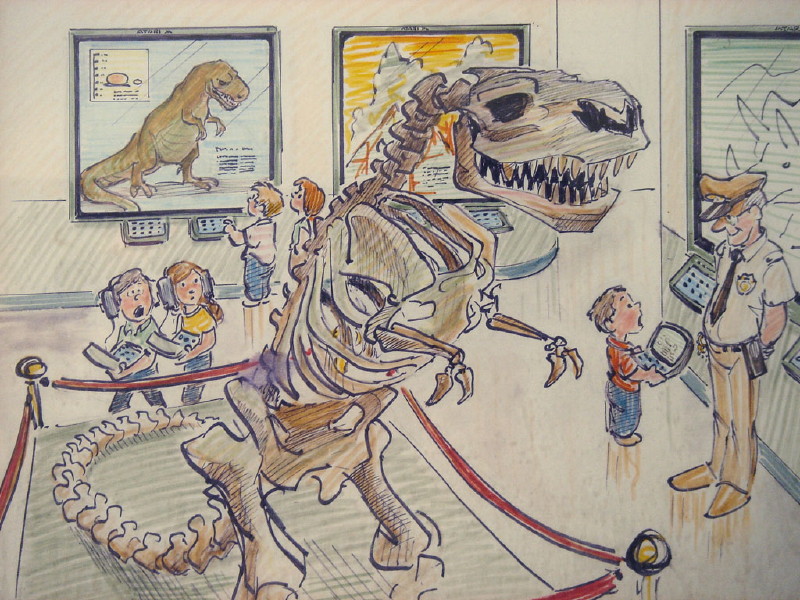
A father reminisces with his son about ’60’s Rock and Roll, calling up footage from the Beatles appearance on The Ed Sullivan Show from the Intelligent Encyclopedia
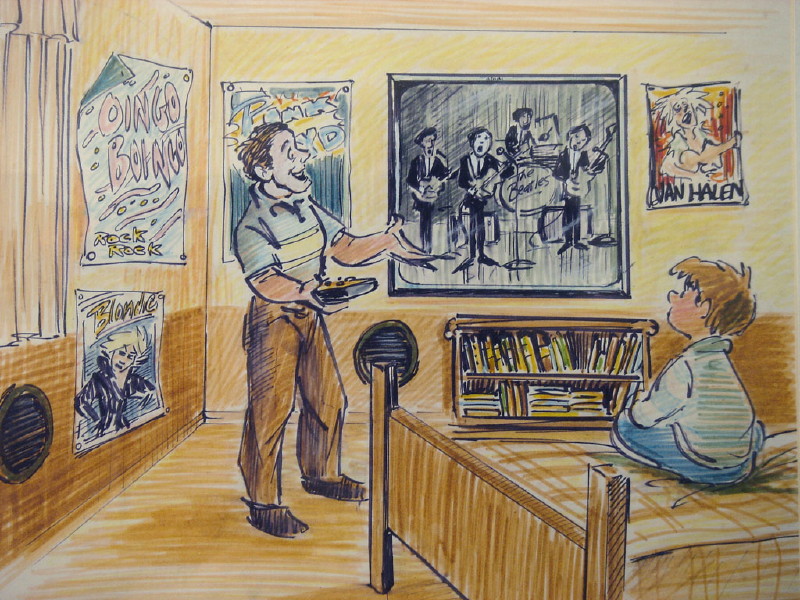
A vintner in northern California wonders what would be involved in changing wine production to sake. On horseback he is asking the Intelligent Encyclopedia about soil and water requirements for growing rice.
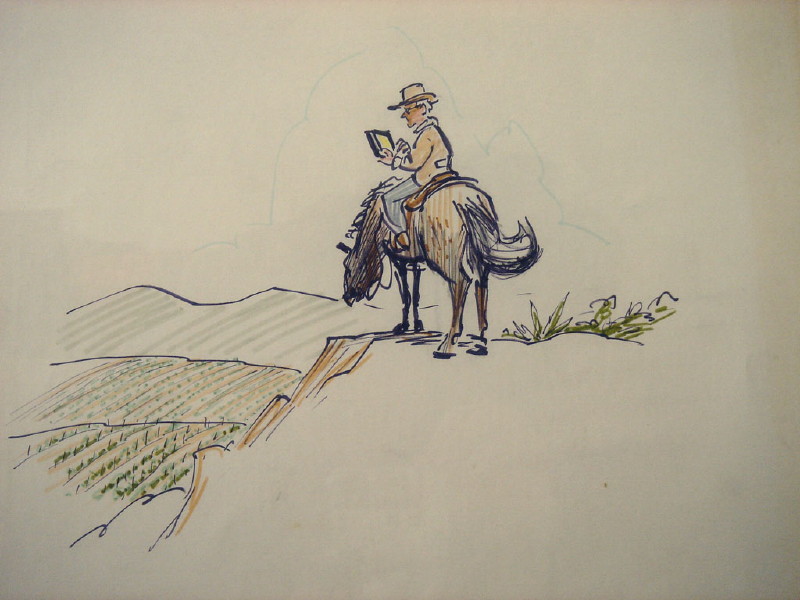
An earthquake wakes a couple in the middle of the night. The Intelligent Encyclopedia, connected to an online service informs them of the severity of the earthquake and makes safety tips readily available.

A third grade class studies various aspects of space travel. The group on the right is running a simulation of a Mars landing while the students on the left are studying a design for a spacecraft.
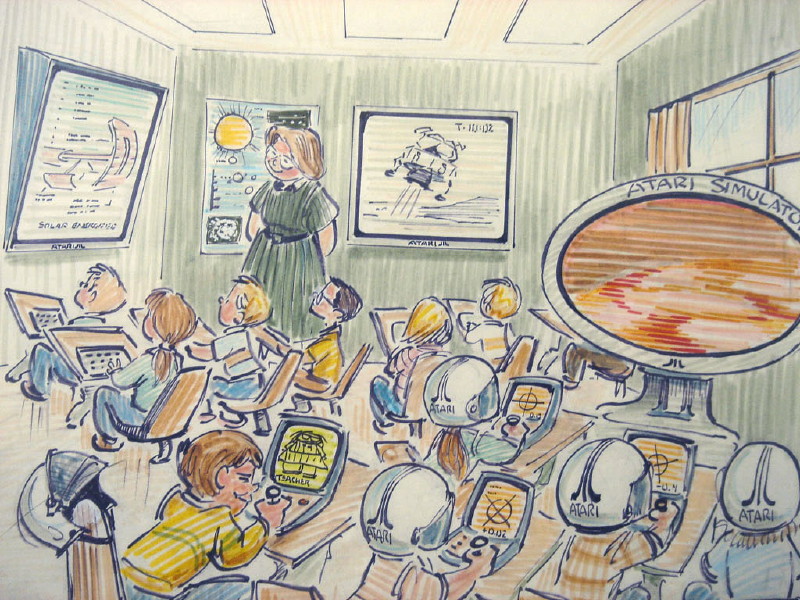
A business man on his way to New York, reviews stockmarket trends.
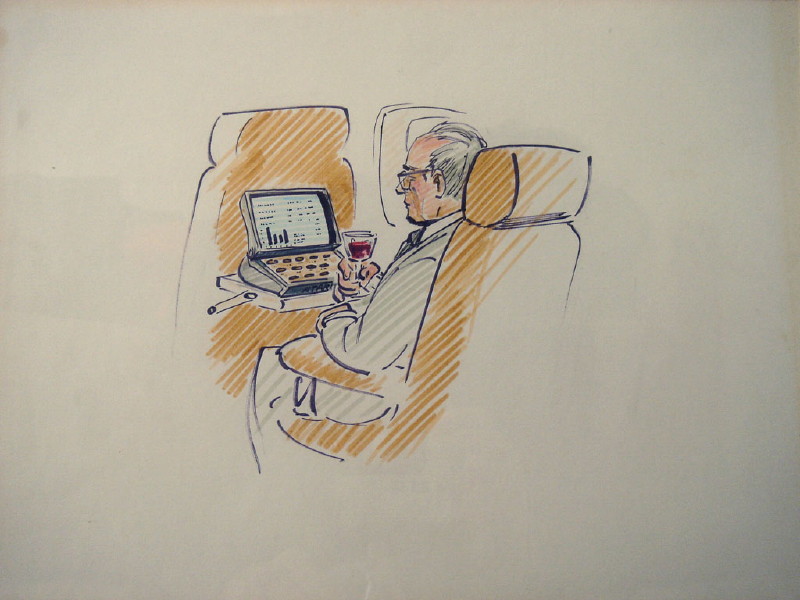
In a bar, the two men at the right are watching football on the screen and running what-if simulations on the countertop Intelligent Encyclopedia which second guess the quarterback. The couple on the left is taking an on-the-spot course in wine connoisseurship.
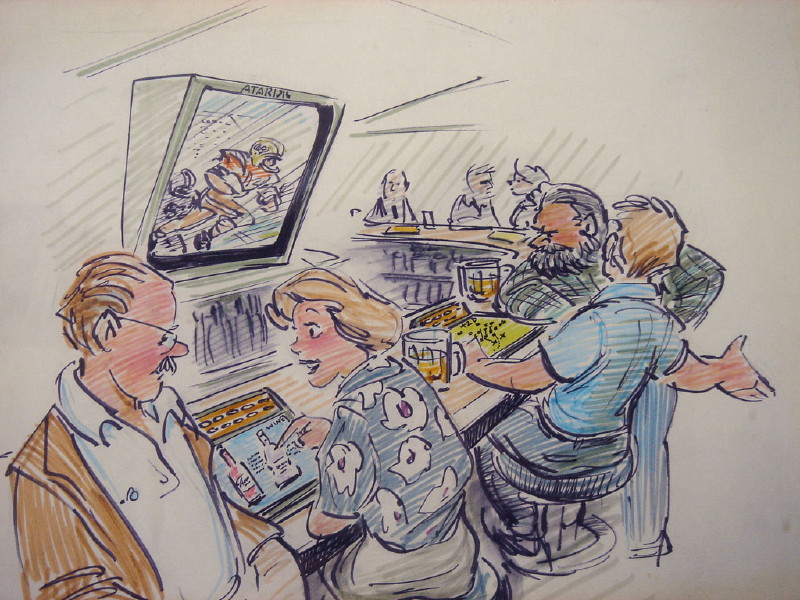
An architect in New York studies Japanese motif for a project he’s working on, while a teacher in Toyo talks with her class about western architectural styles.
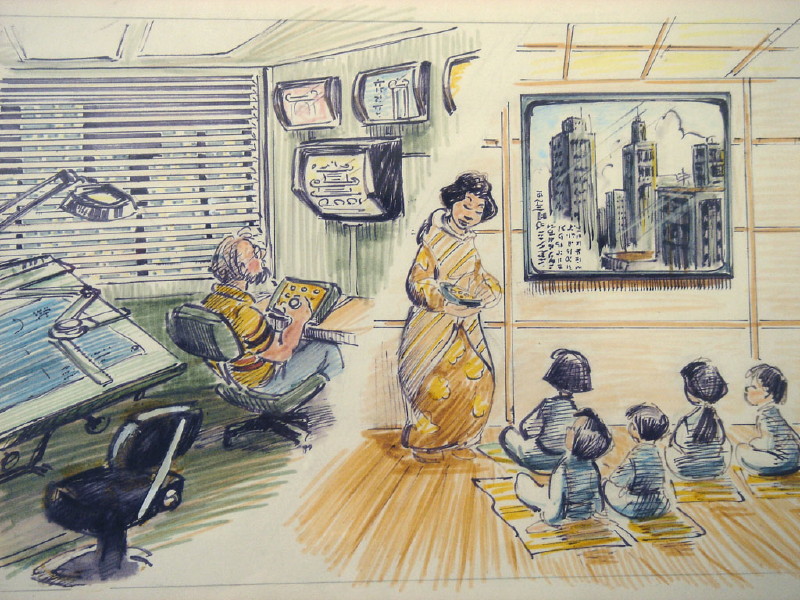
A mother and her children looking into a tidepool in Laguna ask the Intelligent Encyclopedia about the plants and animals that they see. [Notice the antenna for cellular communication.]
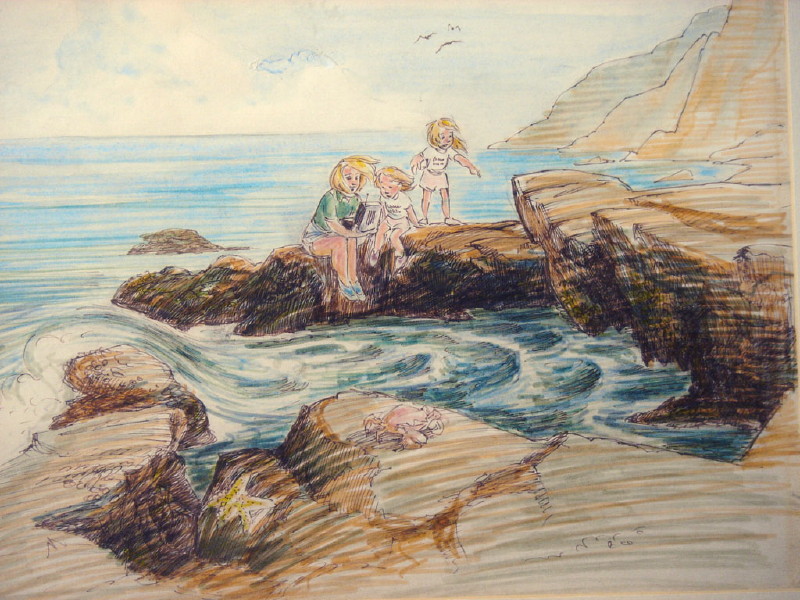

The most outrageous prediction here is that California vintners would consider any change other than plowing under neighboring orchards to plant more vines.
Very impressive. You got a lot more right than is usual for a 30-year look-ahead. The devices people hold are too large, I suppose. But the IE is recognizably the Internet (which of course includes the EB and Wikipedia).
BTW, years ago I bought the print EB, and I still love it.
bob said:
> We came up with these scenarios
> of how the (future) encyclopedia
> might be used
fantastic and prescient, bob. thanks.
> and commissioned Glenn Keane,
> a well-known Disney animator
> to render them.
these illustrations are simply superb.
can’t say enough good things about ’em.
are there more? if so, please reveal!
> we completely missed
> the most important aspect
> of the network —
> that it was going to
> connect people to other people.
perhaps that’s because you were using
nothing more than “mere” imagination?
because along about this same time,
i was absorbed in “network nation”,
by starr and turoff, who reported that
the one most compelling aspect of the
networks they’d examined was precisely
that people on them hijacked them to
engage in communication with each other.
even when the “purpose” of the network
was to coordinate planetary destruction,
people ended up using it to _chat_, and
ask each other how their day was going,
and inquire about spouses and children.
from that to facebook would, seems to me,
be a rather short and fully obvious leap.
certainly not a business worth $100 billion.
then again, i had assumed a “search facility”
would be built in to the information network,
not be the basis for a monster like google.
-bowerbird
Very, very cool. I find it interesting, the (somewhat subtle) influence of Japan in these scenarios. The vintner wondering about Sake production and (less subtle) NY architect studying Japanese motifs. I fondly remember the worry in the 80’s about Japan taking over the world…good times!
Walter Ong has a good explanation for the omission of social communication from the early prospects for screen connectivity. I believe he would interpret your Britannica sketches, not as a forecast of the digital revolution with evocations of a new orality, but as a catalog of a last accentuation of an era of high literacy.
A great new book is Of Ong & Media Ecology. Best wishes,
Hi Bob (and visitors)
People reading this should realize that there was nothing new to be thought up to make these scenarios (they were for Warner execs who were not sophisticated about computers despite having bought Atari).
The ideas were all drawn (pretty much without exception) from the visions and demonstrations of the ARPA-IPTO research community in the 1960s, ca 1968. Main sources were Licklider, Taylor, Doug Engelbart, Nicholas Negroponte, Ivan Sutherland, Seymour Papert, some of my ideas back then (such as the wireless tablet computer), and many others from our colleagues.
I’m not sure what Bob means by “missing that it was going to connect people to other people”.
This was one of the main reasons for all the work we did at ARPA and at Xerox PARC on networking, including ARPAnet and Internet, and both wired and wireless.
This was the subject of a very good white paper from 1968 by the founder of IPTO and one of his successors (JCR Licklider and Bob Taylor) “The computer as a Communication Device” (the second paper in this pdf: http://memex.org/licklider.pdf).
It was one of the concerns of Bob Barton, the great computer designer when I was in grad school in the 60s.
It was the subject of a whole day discussion at the first ARPA grad student conference in 1968 as we were in the process of building the ARPAnet.
It was the main concern of Engelbart, who showed in “the mother of all demos” in 1968 many ways to do communication in many modes of time including real-time and face to face.
And many kinds of such communication was happening in the ARPA and PARC communities in the 70s.
The problem was the 1980s and what was lost by the gold-rush to commercialize subsets of these ideas (to an extent that in many cases was like the carpetbaggers).
It was certainly missed in the 80s by IBM and even Apple.
But not at Atari — this was just an implicit part of the “ARPA Dream”.
McLuhan warned us (using books and TV) indirectly about how strongly people were going to try to regain some sense of identity via an electronic global village. The hope by all of us from the 60s was that education — and The Encyclopedia Britannica whom Bob and I tried to get to understand at length what was going to happen — would help to create a sense of the real value here.
But this didn’t happen, and we wound up with a pop culture.
We can see this so easily by looking at comments on these pictures on various blog sites. I could only find one person who was unlazy enough to see if there were other opinions about these ideas (and did they really come from 1982 or earlier).
That’s a pop culture, mostly trying to admire itself in every shiny surface it can find, and leaving behind the equivalent of “I was here” graffiti.
Best wishes,
Alan
Hi Mr Alan Kay
I stumbled upon this article and comment of yours. Just wanted to drop you a note that I have been using your idea that ‘the best way to predict the future is to create it.’ This is the inspiration of our school theme of ‘creating the future we desire.’
Our school (K-12) is in the forefront of using iPads in our recently implemented mobile learning program.
Thanks for the inspiration.
Br Dennis Magbanua
President
De La Salle Zobel School
Philippines